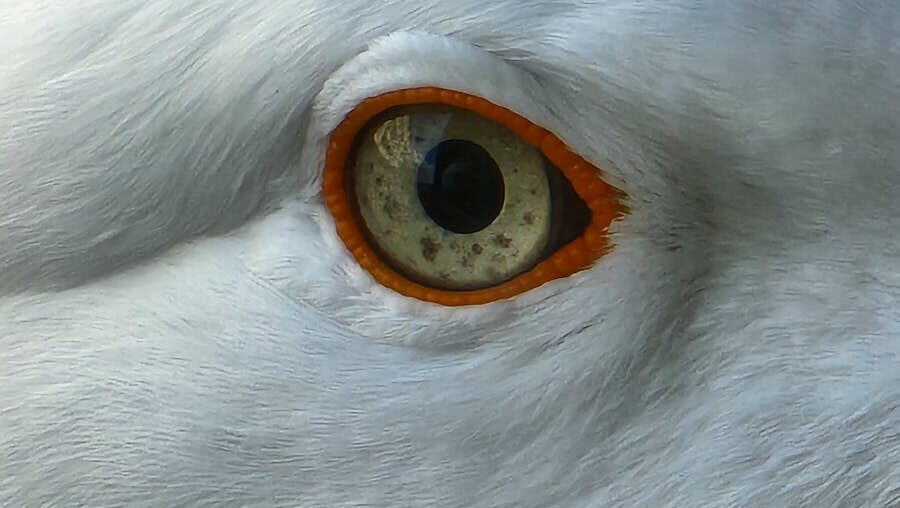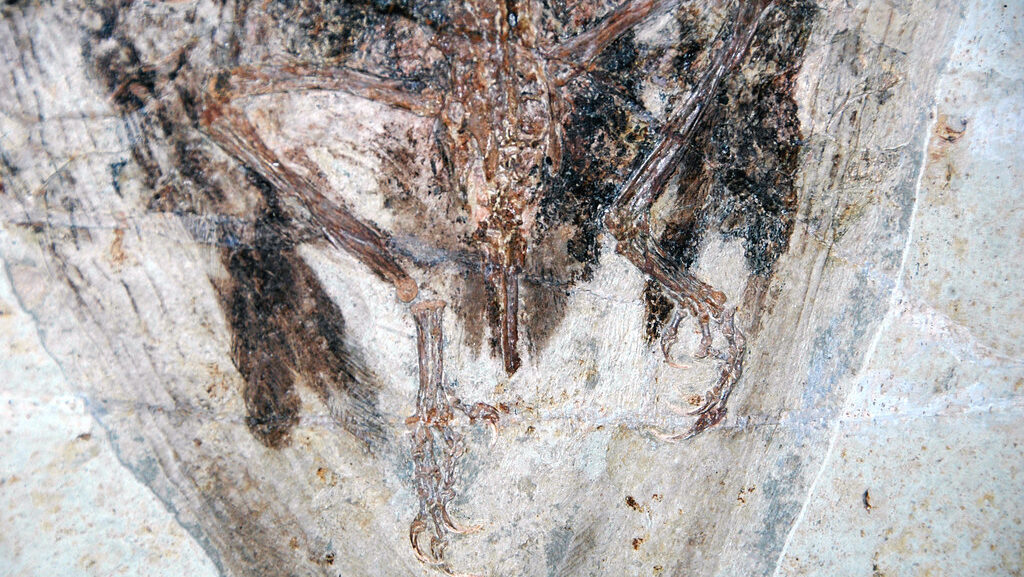When we watch birds soaring through the sky or migrating thousands of miles with pinpoint accuracy, we’re witnessing one of nature’s most remarkable navigation systems in action. While humans rely on GPS and maps, birds possess an innate ability to detect Earth’s magnetic field—a sense called magnetoreception. This extraordinary capability allows birds to perceive directional information and navigate across vast distances with astonishing precision. Scientists have been unraveling the mysteries of avian magnetoreception for decades, yet many fascinating aspects of this sixth sense remain hidden from common knowledge. The intricate mechanisms behind this superpower and how birds interpret magnetic information reveal nature’s ingenuity at its finest.
The Discovery of Avian Magnetoreception

The scientific journey to understand birds’ magnetic sensing abilities began in the 1960s when German scientist Wolfgang Wiltschko conducted groundbreaking experiments with European robins. By manipulating magnetic fields around caged birds during migration season, he observed that the birds consistently oriented themselves in the direction they would naturally migrate, even without visual cues like stars or the sun. This revolutionary discovery established that birds possess an internal compass that responds to Earth’s magnetic field. The scientific community initially met these findings with skepticism, as it seemed implausible that biological systems could detect such subtle geomagnetic forces. Decades of subsequent research not only confirmed these initial observations but revealed that magnetoreception is widespread among birds and far more sophisticated than initially imagined.
Quantum Physics in Birds’ Eyes

Perhaps the most mind-boggling aspect of avian magnetoreception involves quantum mechanics operating within birds’ visual systems. Scientists have identified special photoreceptor proteins called cryptochromes in birds’ retinas that create pairs of quantum-entangled electrons when struck by blue light. These electron pairs form what scientists call “radical pairs” whose spin properties are influenced by Earth’s magnetic field, potentially creating a visual signal that birds can perceive. This mechanism effectively turns a bird’s eye into a quantum detector, allowing them to potentially “see” magnetic fields as patterns overlaid on their visual field. The radical pair mechanism represents one of the few known examples of quantum effects directly influencing biological processes at ambient temperatures, challenging previous assumptions that quantum phenomena couldn’t operate in warm, wet biological environments.
Magnetite-Based Magnetoreception

Besides the light-dependent mechanism, birds possess a second system for detecting magnetic fields based on tiny iron-rich crystals called magnetite embedded in specific tissues. These microscopic magnetic particles physically rotate like compass needles when exposed to magnetic fields, potentially stimulating connected nerve endings to signal direction to the brain. Researchers have discovered clusters of these magnetite crystals in birds’ upper beaks, inner ears, and even in specialized neurons within the brainstem. This magnetite-based system appears to provide birds with information about magnetic field intensity and inclination (the angle at which magnetic field lines intersect Earth’s surface), offering a different but complementary type of magnetic information than the cryptochrome system. The dual-mechanism arrangement may explain why birds can navigate effectively in diverse conditions, including nighttime, cloudy days, and even in areas with geomagnetic anomalies.
Magnetic Maps vs. Magnetic Compasses

Birds don’t just possess a simple magnetic compass—they utilize two distinct types of magnetic information for navigation. The “magnetic compass” sense tells birds which direction is north, south, east, or west, helping them maintain a consistent heading during migration. More surprisingly, birds also possess a “magnetic map” sense that works like a GPS, allowing them to determine their position relative to their destination based on subtle variations in Earth’s magnetic field strength and inclination angle. These magnetic map-and-compass systems work in concert with other navigational cues including celestial information, landmarks, and even scent. The remarkable integration of these multiple systems explains how birds like the Arctic tern can migrate from pole to pole, covering over 44,000 miles annually with extraordinary precision—a feat that would be impossible with just a simple directional compass.
The Brain Regions Behind Magnetic Sensing

Recent neuroimaging studies have revealed specialized regions in birds’ brains that process magnetic information. When birds detect magnetic fields, a region called Cluster N in the forebrain becomes highly active, particularly during nighttime navigation. This specialized neural cluster receives input from the visual system, supporting the theory that birds may actually “see” magnetic fields through their cryptochrome-based detection system. Interestingly, this brain region remains inactive in non-migratory birds or in migratory species during daytime navigation, suggesting they rely on different navigational systems depending on conditions. Scientists have also identified connections between magnetic-sensing areas and the hippocampus—the brain region responsible for spatial memory and navigation—revealing how magnetic information integrates with other navigational cues to form comprehensive mental maps.
Calibration During Development

Young birds must undergo a critical learning period to calibrate their magnetic sensing abilities, contrary to the popular belief that these systems function perfectly from birth. Research shows that juvenile birds exposed to artificially altered magnetic fields during development will adopt these abnormal fields as their reference for life, causing permanent navigation errors. This calibration period typically occurs during a bird’s first autumn, when it observes the relationship between magnetic information and other environmental cues like sunset direction and star patterns. The discovery of this learning requirement helps explain why hand-raised birds often struggle to navigate properly when released into the wild without proper exposure to natural magnetic conditions. Some species even appear to update their magnetic maps annually, fine-tuning their navigation systems based on seasonal changes in Earth’s magnetic field.
Magnetic Fields and Migration Timing

Beyond navigation, magnetic sensing plays a surprising role in regulating birds’ internal clocks and migration timing. Studies have shown that exposure to specific magnetic conditions can trigger hormonal changes that initiate migratory behavior, including increased feeding, restlessness, and fat deposition. These magnetic triggers appear to interact with birds’ circadian and circannual rhythms, helping synchronize migration with optimal seasonal conditions. Researchers discovered this connection by exposing captive birds to artificial magnetic fields that mimicked different global positions, which prompted the birds to display migratory preparation behaviors appropriate for those locations. This magnetoreception-based timing system helps explain how birds coordinate mass migrations with such precision, even when other environmental cues like daylight hours or temperature are artificially manipulated.
Immunity to Electromagnetic Noise

In our modern world filled with electromagnetic fields from power lines, cell towers, and other electronics, birds have demonstrated a remarkable ability to filter out this artificial “noise” to focus on Earth’s natural magnetic field. Scientists have discovered that birds’ magnetoreception systems operate within specific frequency ranges that largely avoid overlap with most human-generated electromagnetic radiation. This selective tuning allows birds to maintain accurate navigation even in urban environments saturated with electromagnetic signals. However, research suggests that extremely strong electromagnetic fields in certain frequency ranges can temporarily disrupt avian navigation, potentially contributing to occasional incidents of bird disorientation near powerful radio transmitters or during geomagnetic storms. This finding has raised concerns about how increasing electromagnetic pollution might affect migratory bird populations in the long term.
Magnetic Sensing Across Bird Species

While all birds appear to possess some form of magnetic sensing, the sophistication and reliance on this ability varies dramatically between species. Long-distance migratory birds like Arctic terns and bar-tailed godwits demonstrate the most advanced magnetoreception systems, capable of detecting minute variations in magnetic field strength and inclination angles across the globe. Homing pigeons possess particularly refined magnetic navigation that integrates seamlessly with their visual landmarks, explaining their legendary ability to return to their roosts from unfamiliar locations hundreds of miles away. Even non-migratory species like chickens and zebra finches possess functional magnetoreception systems, suggesting this sense provides evolutionary advantages beyond long-distance migration, possibly including local orientation, territory mapping, and emergency navigation during displacement. The widespread presence of this sense across the avian family tree indicates magnetoreception evolved early in bird evolution, possibly inherited from reptilian ancestors.
Human Attempts to Detect Magnetic Fields

The discovery of avian magnetoreception has inspired scientists to investigate whether humans might possess latent magnetic sensing abilities. Some intriguing evidence suggests humans might retain vestigial magnetoreception capabilities through cryptochromes proteins that exist in our retinas, similar to those found in birds. EEG studies have detected subtle brain responses to changing magnetic fields, though these signals don’t reach conscious awareness in most people. Behavioral experiments investigating human magnetoreception have yielded mixed results, with some studies suggesting limited subconscious magnetic sensing abilities that might influence spatial orientation. These findings have sparked interest in developing technologies that could enhance human magnetic perception, potentially creating new sensory interfaces for navigation or orientation assistance for the visually impaired.
Artificial Disruption of Magnetic Navigation

The vulnerability of birds’ magnetic navigation systems has become evident through accidental and experimental disruptions that reveal the critical nature of this sense. Birds flying near strong radar installations or during solar magnetic storms have been observed becoming temporarily disoriented, sometimes flying in circles or completely reversing their migratory direction. Experiments using helmets fitted with small electromagnets have demonstrated that artificially altered magnetic fields can cause birds to fly in precisely controlled directions determined by researchers. Conservation biologists have raised concerns about how human activities that generate strong electromagnetic fields, such as certain renewable energy installations, communication towers, or high-voltage power lines, might create “navigational dead zones” for migratory birds. These artificial disruptions have provided valuable insights into how birds’ magnetic navigation functions while highlighting potential conservation considerations for infrastructure planning.
Evolutionary Origins of Magnetoreception

The evolutionary history of avian magnetoreception stretches back much further than birds themselves, with evidence suggesting this sense evolved in ancient vertebrates over 500 million years ago. Fossil evidence and comparative studies indicate that magnetite-based sensing likely evolved first as a mechanism for orientation in primitive fish, while the cryptochrome-based system may have developed later as a specialized adaptation of light-sensing proteins originally used for regulating circadian rhythms. Remarkably, magnetic sensing appears to have evolved independently multiple times across different animal groups—from bacteria and insects to sea turtles and mammals—representing a striking example of convergent evolution. The particularly sophisticated dual-mechanism system in birds likely developed during the Mesozoic Era as early birds faced selection pressures for accurate long-distance navigation during seasonal migrations or while searching for isolated nesting grounds.
Future Research and Technological Applications

The ongoing study of avian magnetoreception holds promise for revolutionary applications across multiple fields. Biomimetic navigation systems based on birds’ magnetic sensing mechanisms could potentially create more energy-efficient and reliable positioning systems that don’t rely on satellite networks. Medical researchers are investigating how the cryptochrome-based radical pair mechanism might influence human biological processes and whether artificial manipulation of these proteins could treat conditions related to circadian rhythm disruptions. Neuroscientists hope that understanding how birds process magnetic information might provide insights into how brains integrate multiple sensory inputs to create cohesive representations of space. Perhaps most excitingly, the quantum mechanical aspects of avian magnetoreception have captured the attention of quantum physicists and computer scientists, who see potential applications for quantum sensing technologies that could operate at room temperature without requiring the extreme cold typically needed for quantum systems.
Conclusion

The remarkable ability of birds to sense Earth’s magnetic field represents one of nature’s most elegant solutions to the challenge of global navigation. What began as a scientific curiosity has evolved into a rich field of research that crosses disciplines from quantum physics to neuroscience. As we continue to unravel the mechanisms behind this extraordinary sense, we gain not only a deeper appreciation for the sophisticated capabilities of birds but also potential inspirations for new technologies. The next time you witness a flock of birds navigating with unerring precision across the sky, remember that you’re observing living proof that nature developed its own sophisticated GPS system millions of years before humans contemplated the concept of navigation—a system that still holds secrets waiting to be discovered.
